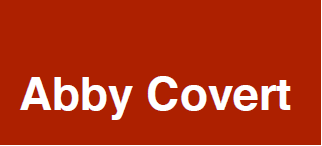Stuck? Diagrams help.
When was the last time you felt stuck? Maybe it was because of a decision you were struggling to make, a complex topic you were trying to understand, or a project with so many moving parts that you felt somehow both motionless and emotionful.

There are obvious tools for when we are physically stuck: jaws of life, life rings, tug boats, and tow trucks, just to name a few. But what tool do we turn to when we feel this kind of emotionally stuck?
Diagrams are visual representations that help. Especially when we feel stuck.
Like emotional tow trucks, diagrams have been helping people for hundreds of years across industries, fields, and cultures when they feel this kind of stuck.
The best way to support my work is to buy directly from me. I offer paperback, as well as PDF and ePub in my shop. This is also available in paperback on Lulu and on my Etsy shop. If you buy the ePub on Amazon, use my affiliate link.

Diagrams are everywhere if you are paying attention.
Designers, engineers, project managers, teachers, analysts, technical writers, architects, salespeople, and product managers are just some of those who are making good use of diagrams on the job. Museums, parks, post offices, and grocery stores are a few of the everyday places where you might encounter a diagram—or five. Their labels are as diverse as the contexts they serve: charts, infographics, schemas, models, workflows, information visualizations, canvases, maps, figures, etc.
10 jobs with oodles of diagrammatic potential
- Architects (info, data, built et al) projecting scope and vision for structure and language
- Designers navigating stakeholders through decisions
- Statisticians and Analysts telling stories with data
- Engineers and Technologists (data, front end, ML et al) explaining scope, connections, components, and logic
- Operations Managers making decisions about how information and resources flow
- Product Managers considering directional options and incremental planning
- Project Managers trying to inspire a team with a shared vision and clear milestones
- Researchers (user, academic, market et al) zooming out on problem spaces and framing insights
- Teachers (early childhood, elementary, secondary, post secondary et al) visually engaging students to increase comprehension of topics
- Writers creating visuals to get their points across
Diagrams! Diagrams! Diagrams!
The doodle on the whiteboard to illustrate a point in a meeting? Diagram. The simple map used to highlight where the birthday party will be next weekend? Diagram. The instruction manual used to put together that new bookcase? Diagram. The visual your team used to get to that big goal?
That’s right, diagram.
If diagrams relate to so many paths and goals, when are we actually taught how to use this tool that has proven so good at helping when we feel stuck? And are we ever taught what makes a diagram good?
For too many people the answers are never and no. Everyone feels stuck sometimes and diagrams help.
If you have never made a diagram in your life or feel under-skilled in this area, know that I wrote this book primarily for you. We will dissect diagrams into their basic elements while working to build your confidence both in the process and with the outcomes to expect from diagramming. And if you are a true novice, in the first few pages, we will learn just enough to make your very first diagram.
If you already make (or dare I say even enjoy making) diagrams but are not sure if your diagrams are as effective as they could be, I wrote this book for you as well.
Many experienced diagrammers came to diagramming through a fairly narrow entry point, with a specific method or template that does not allow a diverse exposure to diagrams in other contexts.
In STUCK? Diagrams Help. you will learn:
- A set of five superpowers that diagrams provide when we feel stuck
- A controlled vocabulary for diagrams and diagramming
- A simple process for diagramming designed to be useful across contexts
- A set of heuristic criteria for what it takes for a diagram to be good
- Actionable collaboration strategies for diagramming with other people
- Common patterns and recipes for diagrammatic success



Oh yeah, and I might have gone a little overboard with the back of this book. Whoopsie. It provides resources that you might find useful over your diagrammatic lifetime including a diagrammatic literature review in which librarian and taxonomist, Jenny Benevento, dives into how much there, there is when it comes to diagrams.

